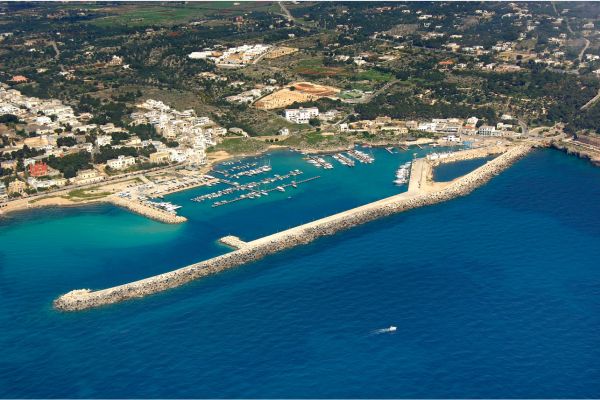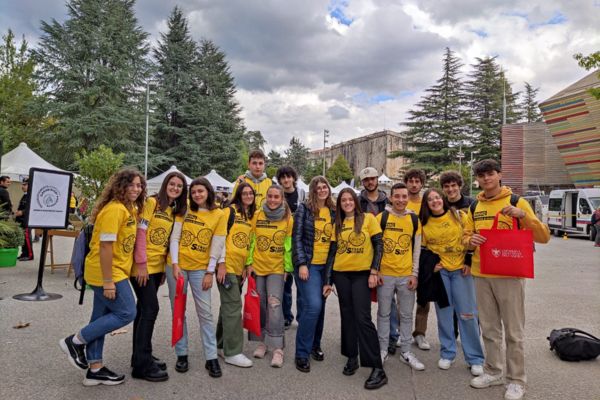Thirty years later, L’Aquila has a new stadium. The push from team Open Stadium Acquasanta
“Construction on the stadium had been on hold for years, so in town you could see the structure there, but it couldn’t be used, and they wanted to know why the works were progressing so slowly,” Anna Iorio, educator, said, referring to the young, first and second-year students from Amadeo d’Aosta Secondary School in L’Aquila who formed the team Open Stadium Acquasanta (OSA) to participate in the third edition of A Scuola di OpenCoesione (ASOC) for the 2015-2016 school year.
In a town damaged by an earthquake on 6 April 2009, Ms Iorio, who assisted the team of students in their civic monitoring efforts, recalled that they were excited about the idea of monitoring a project for young people and for sport.
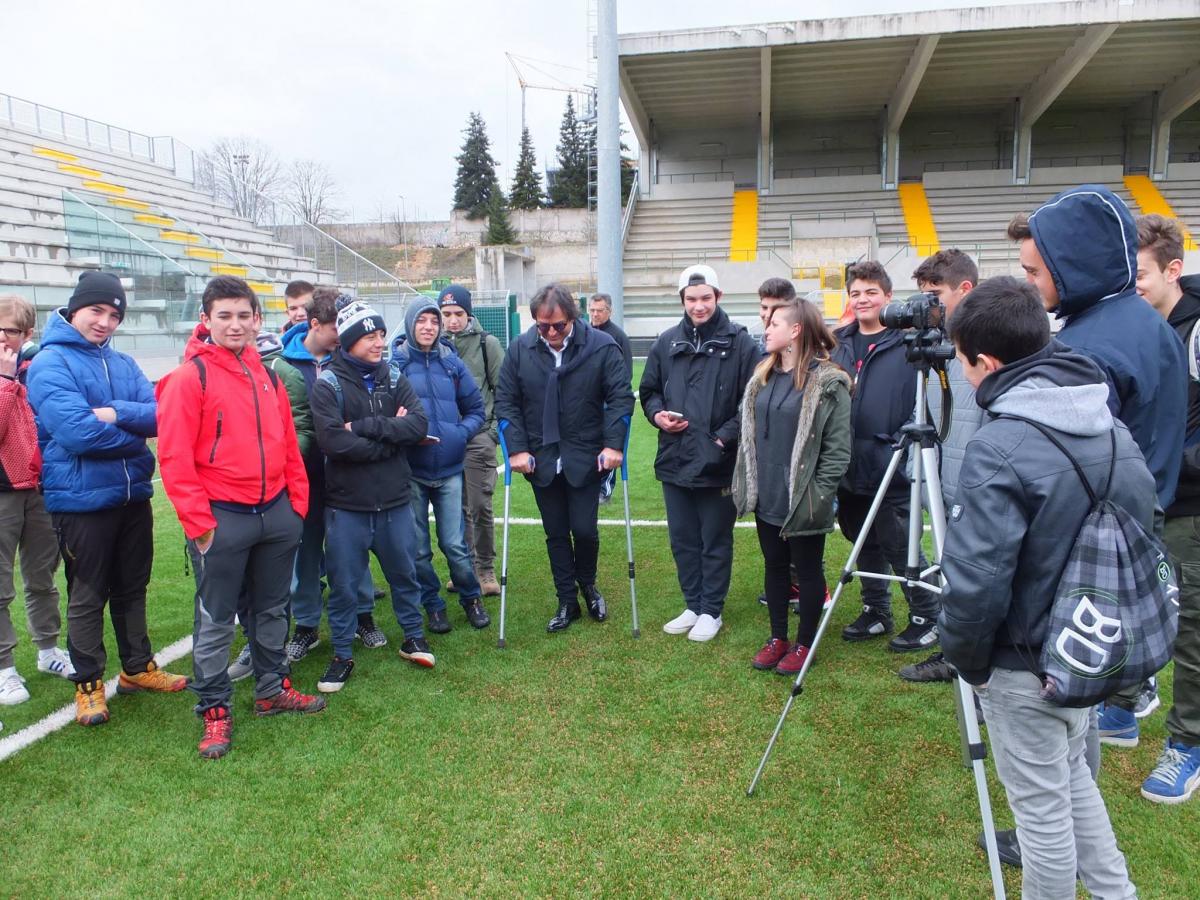 The facility was originally intended for rugby and was subsequently changed to a football pitch. This was one of the reasons for the delays, along with the need to use the space for temporary shelter for the residents of L’Aquila who had lost their homes due to the earthquake. In the face of these circumstances, the students of team OSA were able to engage the media and the public sector to underscore how much L’Aquila wanted this stadium.
The facility was originally intended for rugby and was subsequently changed to a football pitch. This was one of the reasons for the delays, along with the need to use the space for temporary shelter for the residents of L’Aquila who had lost their homes due to the earthquake. In the face of these circumstances, the students of team OSA were able to engage the media and the public sector to underscore how much L’Aquila wanted this stadium.
“I’m not sure how much the students’ interest helped to get the project moving again. Without doubt, they were able to conduct interviews for a local radio station and drew more attention to the issue,” Anna Iorio recalled. For example, the news publication Newstown ran an article in April 2016 entitled “Acquasanta stadium ‘open’ thanks to student monitoring”.
“What we can say is that our project accelerated the reopening of the stadium, which had been under construction for more than 30 years. Today, we have an accessible stadium, and the fans have been enthusiastic about this innovation,” said one of the students in a video produced in 2016.
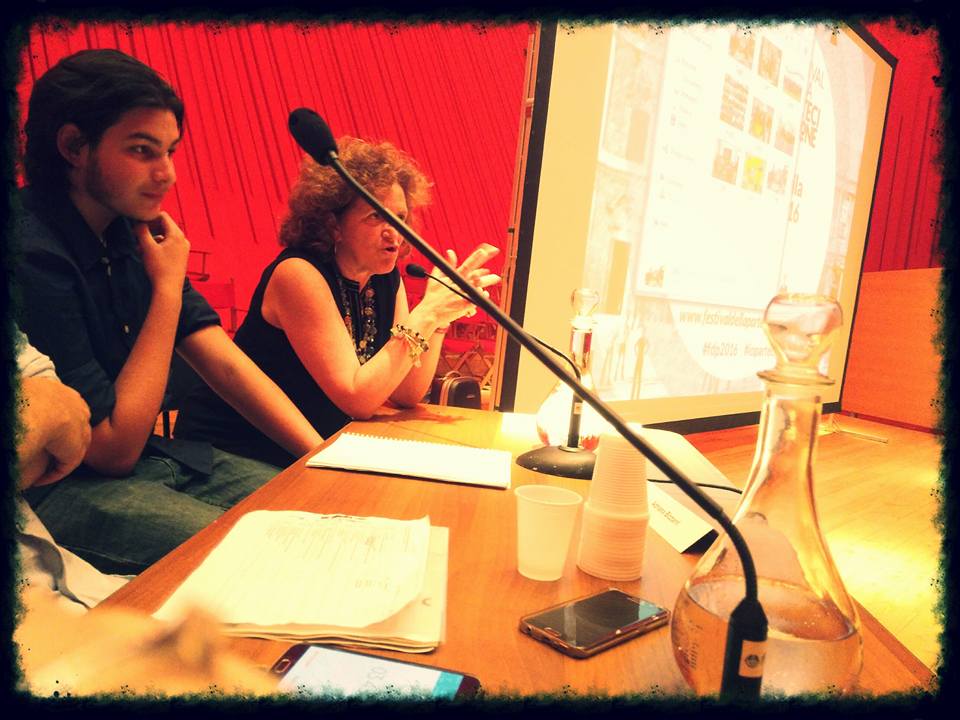 In July 2016, the students were featured guests at the Festival della Partecipazione, a national event organised in L’Aquila by leading national associations such as Action Aid, to present their project of civic monitoring within the scope of #sottoscrutinio [hashtag that translates literally as “under scrutiny”]. In September of that same year, they were at the stadium to document the first home match for the L’Aquila football squad.
In July 2016, the students were featured guests at the Festival della Partecipazione, a national event organised in L’Aquila by leading national associations such as Action Aid, to present their project of civic monitoring within the scope of #sottoscrutinio [hashtag that translates literally as “under scrutiny”]. In September of that same year, they were at the stadium to document the first home match for the L’Aquila football squad.
Three years later, in 2019, they came back to check up on the Acquasanta stadium within the scope of an edition of ASOC Experience. It was in that year that the stadium finally obtained all its safety certifications, enabling all available areas to be used and allowing for any sports event to be held at the facility.
“I remember years that were packed with initiatives. The town had set up a participation office, and we were all able to broaden the debate and get public opinion engaged. The stadium had become an important issue, and I remember good coverage in the media.
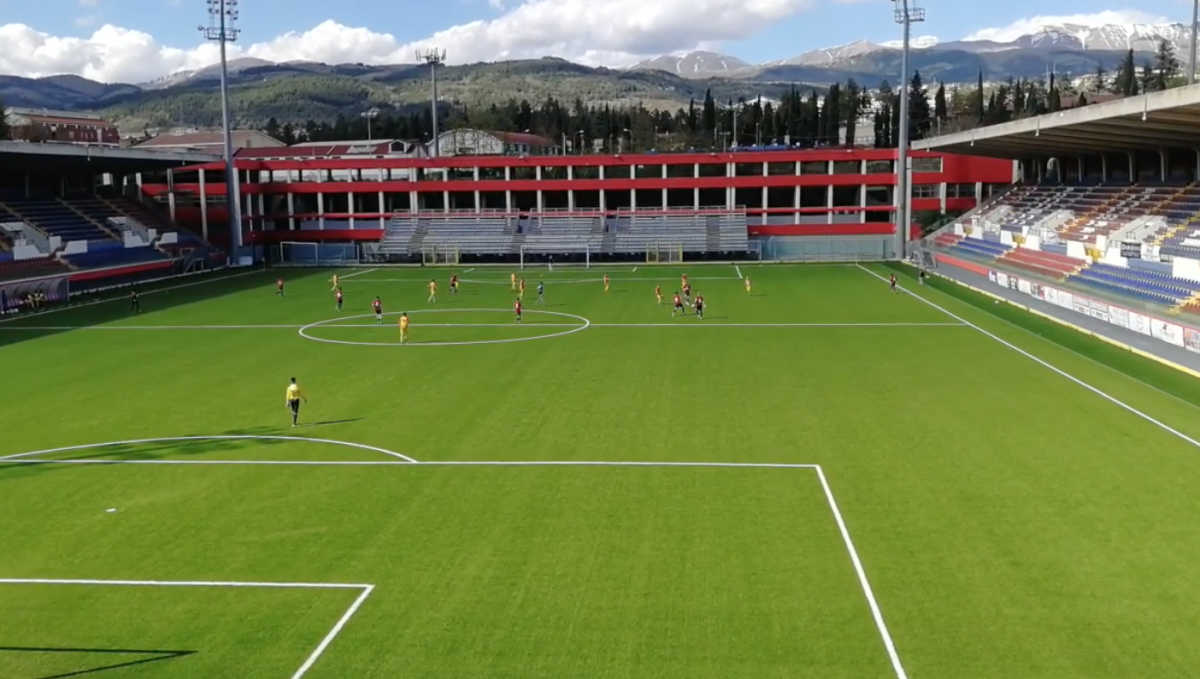 There was a climate of great engagement in this and other projects, many of which also related to construction of a few schools for which work if finally about to begin,” said Fabio Pelini, now the Councilman for Participation for the City of L’Aquila. Among the OSA team’s many ideas for generating engagement there was also a petition asking students what they thought the name of the stadium should be.
There was a climate of great engagement in this and other projects, many of which also related to construction of a few schools for which work if finally about to begin,” said Fabio Pelini, now the Councilman for Participation for the City of L’Aquila. Among the OSA team’s many ideas for generating engagement there was also a petition asking students what they thought the name of the stadium should be.
The city had selected the name Italo Acconcia, in honour of the footballer and team manager born in the 1920s in the province of L’Aquila, who had begun his football career with the city’s team.
The petition landed on the name Gran Sasso d’Italia, referring to the highest summit in the Apennine Mountain range, which overlooks the city, hence the name now given to the Acquasanta facility: Gran Sasso d’Italia–Italo Acconcia.


